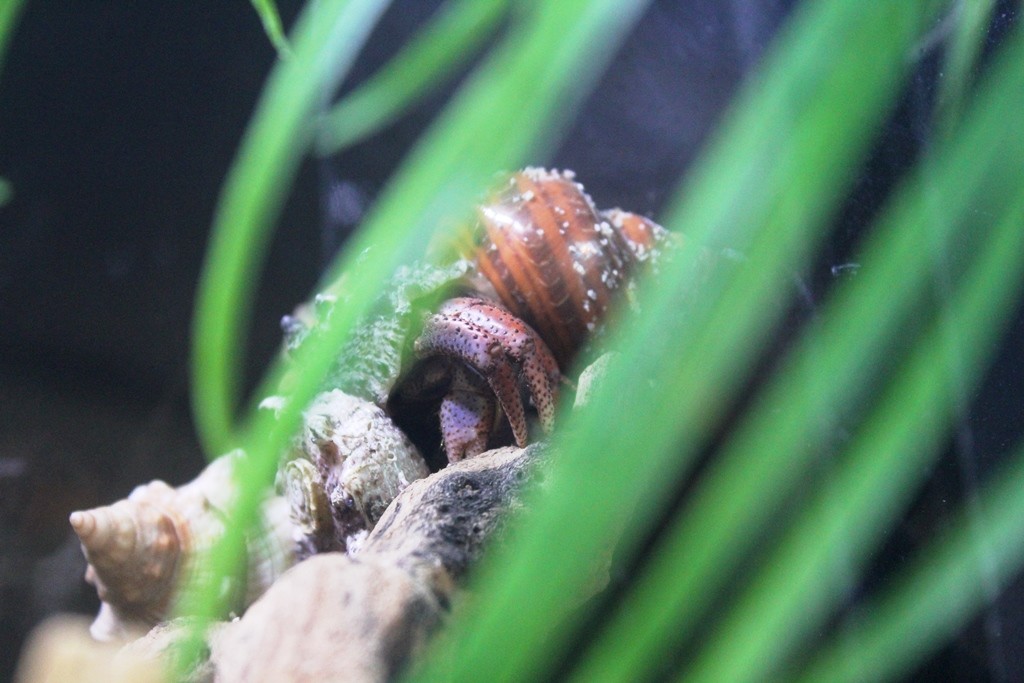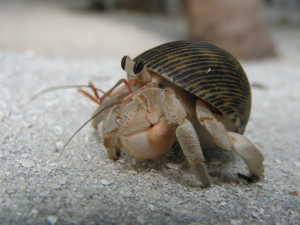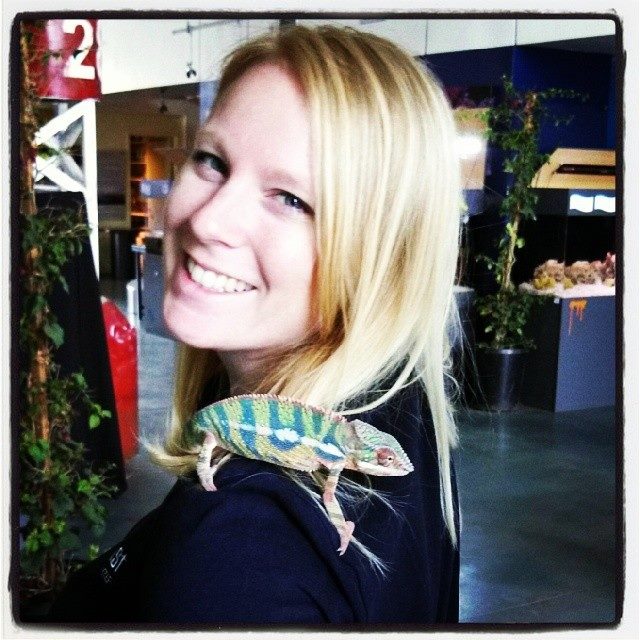Home is Where the Shell is
By Lindsay Bradshaw, Animal Care Manager
First things first, take a moment to picture your house. It probably has these important characteristics: a kitchen, a bathroom, bedrooms, and a roof. We humans need to have a safe, warm, and dry place to call home. Animals all have homes too, but they are pretty different than our idea of what a home is. Can you think of a good home for an owl? A tree! What about a home for a squirrel? A burrow! And what about a clownfish? An anemone! Homes come in many varieties to suit the needs of each animal. 
Today, I want to introduce you to one of nature’s most resourceful homeowners: the hermit crab! A home for a hermit crab is a shell, but hermit crabs don’t make the shells themselves, so where do they get them? Believe it or not, they actually recycle them from other animals like snails. Snails also use shells as their homes, but they grow the shell themselves. As the snail gets bigger, so does its shell. When a snail dies, the soft part of the animal decomposes or is eaten by another animal. The hard shell is left behind and becomes the perfect residence for a hermit crab!
 Hermit crabs, unlike other crabs, have a soft abdomen that makes them very vulnerable to predators. They seek out these leftover snail shells and when they find one that is the right size, they climb right in. They don’t need to worry about renting a U-Haul, or carrying a floppy mattress down a steep staircase. Moving day for a crab only takes a minute or two. Can you imagine carrying your whole house on your back? Hermit crabs carry their shell with them wherever they go and only leave the safety of their shell when they molt or when they outgrow their current residence.
Hermit crabs, unlike other crabs, have a soft abdomen that makes them very vulnerable to predators. They seek out these leftover snail shells and when they find one that is the right size, they climb right in. They don’t need to worry about renting a U-Haul, or carrying a floppy mattress down a steep staircase. Moving day for a crab only takes a minute or two. Can you imagine carrying your whole house on your back? Hermit crabs carry their shell with them wherever they go and only leave the safety of their shell when they molt or when they outgrow their current residence.
At the Living Coast Discovery Center, you can see hermit crabs in their shell homes as part of the Passport to the Pacific exhibit. The crabs are nocturnal so you might not see them scuttling around, but they are excellent climbers and you can see them all together at the tops of their branches. Come check them out!

Lindsay Bradshaw is the Animal Care Manager at the Living Coast Discovery Center. She has worked for several animal-focused organizations, including Birch Aquarium at Scripps, Nature and Raptor Center of Pueblo, Maui Ocean Center, and the Vancouver Aquarium.
